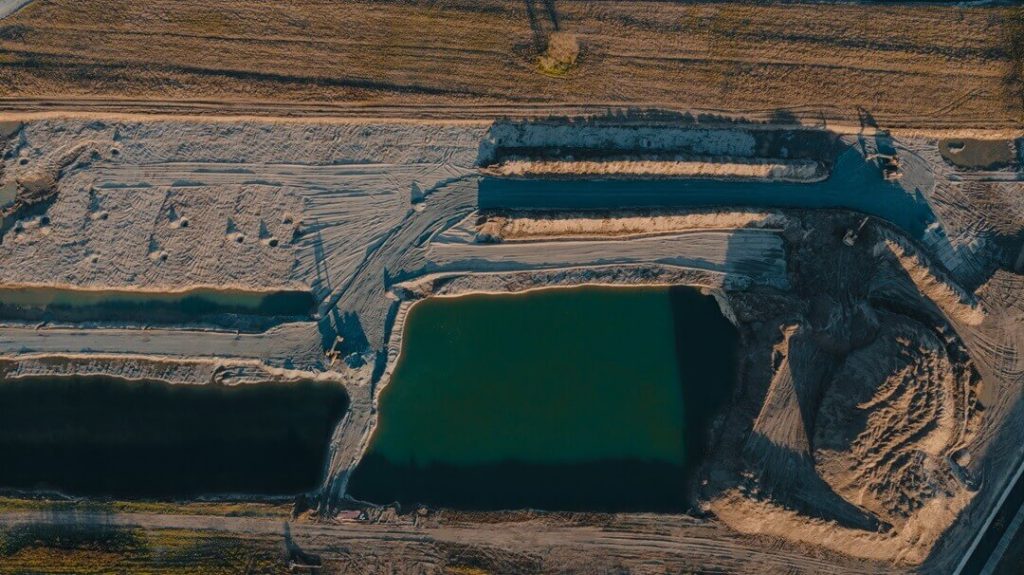
Geomembrane technology has undergone significant advancements and become a powerful support in various industries such as agriculture, mining, waste management, and civil engineering.
This article explores the market dynamics, applications, and emerging trends in geomembrane technology, focusing on high-density polyethylene (HDPE) geomembranes for their important role in water and waste management.
The geomembrane liner market has witnessed substantial growth, with projections indicating a positive trajectory fueled by increased demand from diverse industries. Geomembrane liners, crafted from materials like polyethylene, polypropylene, or polyvinyl chloride, offer a flexible and impermeable solution for containing liquids, gasses, and vapors. The surge in demand can be attributed to strict regulations on waste management, water conservation efforts, and burgeoning infrastructure development in emerging economies, especially in the Asia-Pacific region.
– HDPE
– LLDPE
– PVC
– FPP
– Other
High-density polyethylene (HDPE) liners, known for their high tensile strength and durability, find extensive applications. They are particularly well-suited for areas with high deformation, showcasing their flexibility and resistance to punctures.
– Waste Management
– Water Management
– Mining
– Tunnel & Civil Construction
Geomembrane liners play an important role in diverse industries. In waste management, these liners prevent harmful substances’ leakage from landfills, ensuring environmental and public health protection. Water management applications include reservoirs, ponds, and canals, providing effective water retention and seepage prevention.
Geomembranes, impermeable membranes used to line landfills, ponds, and containment structures, offer an effective solution for sustainable waste management. Materials such as high-density polyethylene (HDPE), polyvinyl chloride (PVC), and ethylene propylene diene monomer (EPDM) are commonly used in their construction. These versatile membranes act as an important component in modern waste containment strategies, addressing the escalating need for environmentally friendly practices in waste management.
As the global population continues to expand, the importance of managing waste in an eco-conscious manner becomes important. Geomembranes serve as a reliable shield, preventing the infiltration of harmful substances into the surrounding environment, thus playing a crucial role in ensuring the sustainability of waste containment systems.
HDPE geomembranes, renowned for their strength, durability, and chemical resistance, serve as a reliable barrier against liquid and gas escape. They have a lifespan of up to 100 years, making them a cost-effective, long-term solution for waste management. The advantages of geomembranes extend beyond mere containment; they actively contribute to environmental protection by minimizing the risk of pollution and contamination. Their use in waste management systems aligns with the growing global emphasis on sustainable practices.
Geomembranes find applications not only in waste management but also in mining and water containment. In waste management, these membranes prevent the escape of leachate and contaminants from landfills, safeguarding both the environment and public health.
In mining operations, geomembranes line tailings ponds, acting as an necessary barrier to prevent the release of hazardous mining waste into the surrounding soil and water. The versatility of geomembranes is further underscored by their application in water containment, where they line storage tanks, ponds, and irrigation canals, ensuring effective water retention and preventing seepage.
Selecting the appropriate geomembrane involves considering factors such as material, thickness, and installation method. HDPE geomembranes, with their robust properties, are often the preferred choice for waste management projects. The selection process is a critical aspect of ensuring the long-term success of waste containment structures.
The robustness of HDPE geomembranes, combined with their resistance to chemicals and UV radiation, makes them well-suited for diverse applications. The longevity of these geomembranes significantly reduces the need for frequent maintenance and repair, contributing to their cost-effectiveness and overall reliability.
Leading geomembrane manufacturers prioritize quality, durability, and performance. These products are trusted globally for their ability to withstand extreme weather conditions and environmental factors. Commitment to quality is evident throughout the manufacturing process, ensuring compliance with the highest industry standards.
The global demand for geomembranes attests to their effectiveness and versatility in meeting the diverse needs of projects, ranging from small residential developments to large-scale commercial endeavors. By adopting cutting-edge technology and production methods, these manufacturers contribute to the continuous evolution and improvement of geomembrane technology, reinforcing its position as a cornerstone in sustainable waste management and environmental protection.
The global geomembrane liner market is witnessing notable trends, including the growing demand for environmentally sustainable geomembranes. Increased adoption in the construction industry for containment systems and water retention is propelling market growth.
Advanced materials with enhanced properties, such as higher tear resistance and improved chemical resistance, are also emerging trends. The mining sector’s increasing use of geomembrane liners for tailings ponds and heap leach pads further contributes to market expansion.
October 18, 2022, marked the 50th anniversary of the Clean Water Act (CWA), a landmark initiative addressing water quality in the United States. Geomembranes have played a vital role in implementing the CWA, particularly in wastewater treatment.
Over the years, treatment methods and standards have evolved, with geomembranes proving necessary in managing stormwater discharges. They mitigate damage, provide detention for quality assurance, and enable natural attenuation and settling for beneficial reuse.
Geomembranes are not just impermeable barriers; they represent a sustainable solution for waste management and various containment applications. Their durability, resistance to chemicals, and long lifespan make them instrumental in preventing leaks and contamination, thereby safeguarding the environment and the well-being of nearby communities.
Copyright © Gateway Structure Sdn Bhd (199401025111). All Right Reserved.